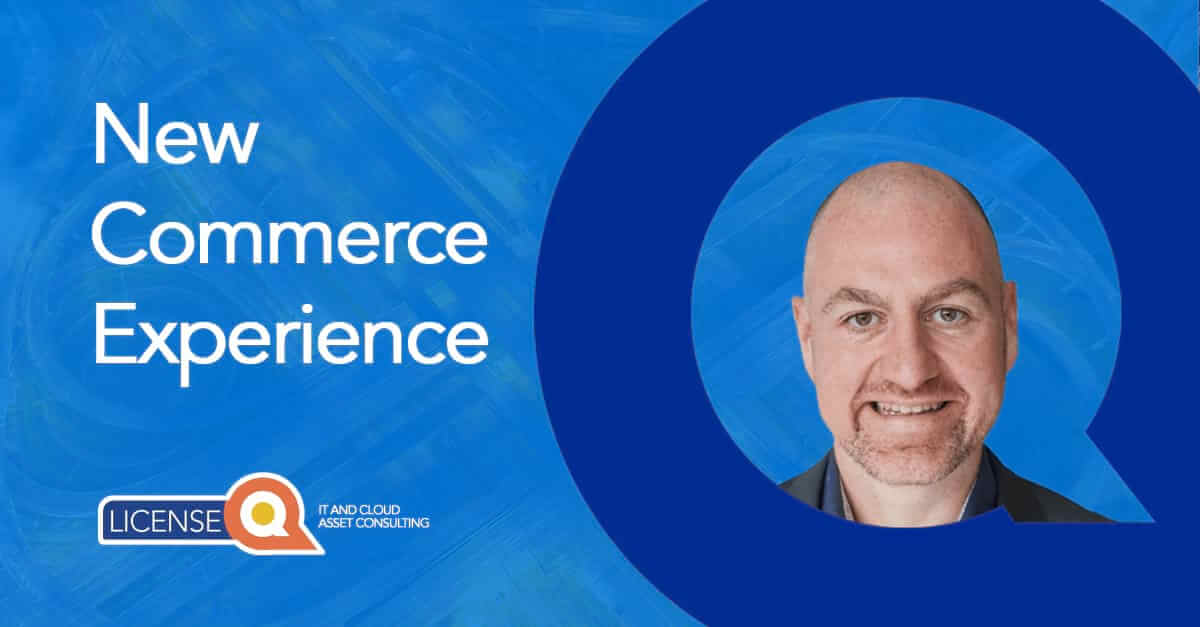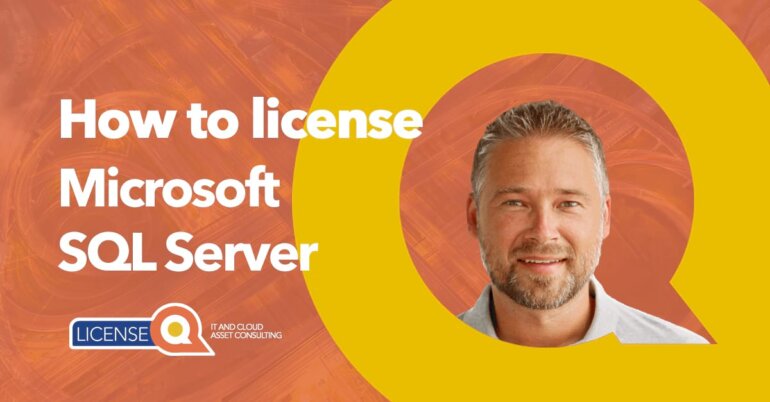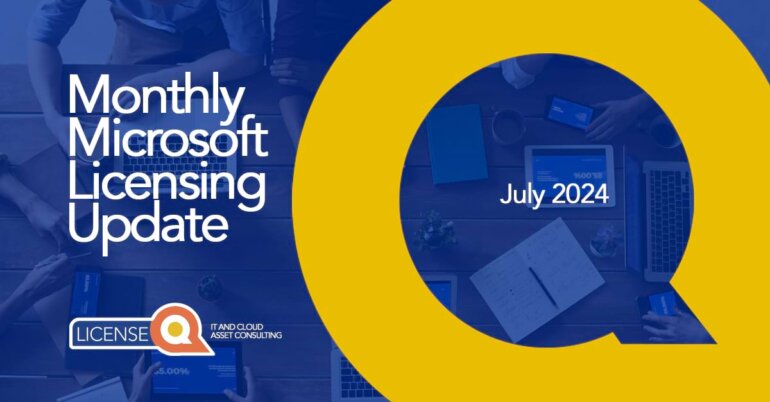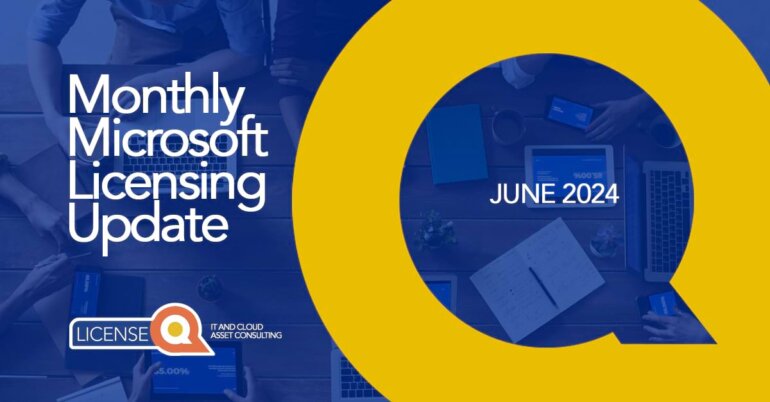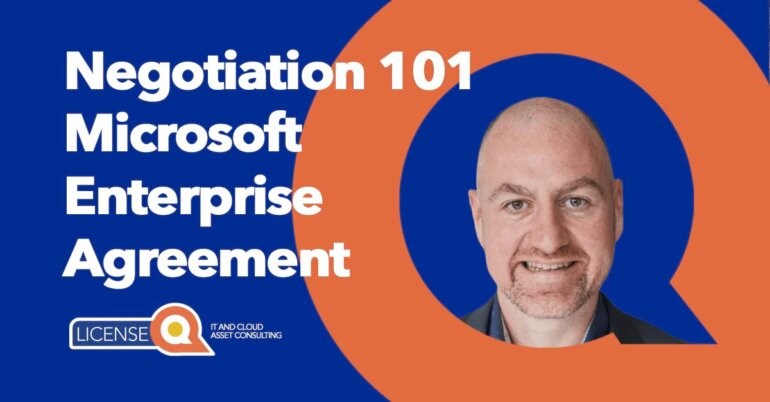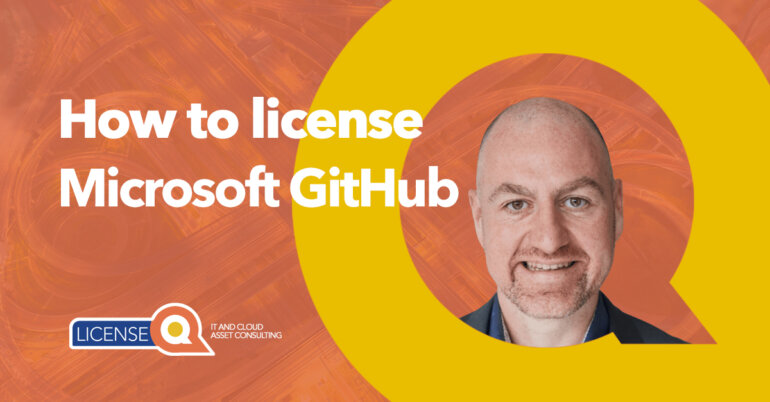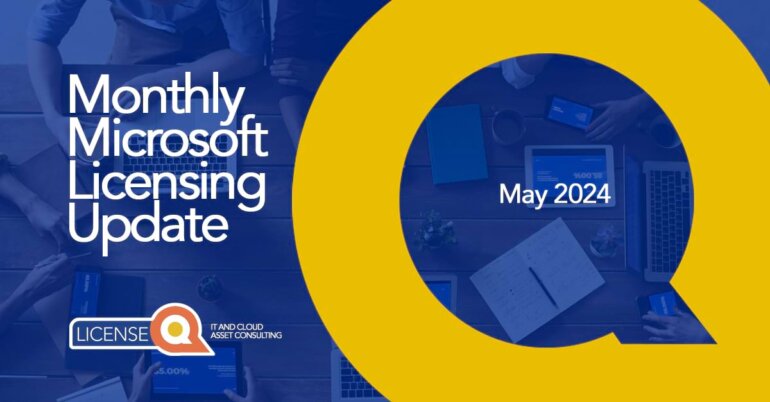Microsoft's New Commerce Experience explained
7 things you need to know about NCE
- What is Microsoft’s New Commerce Experience?
- What are the benefits of the NCE for Microsoft customers?
- What is the difference between the NCE & the CSP?
- What is the impact of the NCE on license management?
- What are the commitment options in the NCE?
- How does the NCE affect pricing?
- What are the benefits of the NCE to Microsoft partners?
1. What is Microsoft’s new commerce experience (NCE)?
Microsoft’s NCE is a new pricing model building on the CSP program. It is designed for cloud services to simplify procurement for all business customers.
Microsoft’s New Commerce Experience (NCE) is a program that now exists for Azure, Microsoft 365, Dynamics 365, Windows 365, and Power Platform. Additionally, some Microsoft partners allow purchase of subscriptions for software like SQL Server, Windows Server and others.
Key takeaways NCE:
- Applies to seat-based offers, typically associated with services sold on a per-user basis.
- Simplified licensing experience for Microsoft 365, Dynamics 365, Microsoft Intune and other services that were available in Partner Center.
- Flexibility through more commitment options.
- The new model introduces pricing changes. Particularly affecting businesses who opt for the flexibility of monthly subscriptions over annual ones. This incurs higher costs.
- NCE has benefits for Microsoft partners. The NCE is designed to facilitate sales, accelerate cloud adoption among customers and establish a more resilient business model.
The impact of NCE on M365 licensing
Microsoft’s NCE marks a significant transformation in how customers and partners interact with Microsoft’s cloud services and license procurement.
Introduced within the Cloud Solution Provider program, the NCE overhauls Microsoft’s licensing structure. It aims to streamline the purchase and management of Microsoft cloud services, including M365, D365, Power Platform, and W365.
Main objectives of the New Commerce Experience
The NCE’s primary objectives are to simplify transactions, enhance customer purchasing experiences, and offer flexible pricing options. It aims to provide greater transparency and predictability in costs. This enables organizations to scale their services seamlessly based on their evolving needs.
The NCE recognizes the diverse preferences of customers in purchasing and managing online services. It presents both annual and monthly subscription models to cater to different business requirements. By making a revenue commitment pricing becomes more predictable.
Standardizing contractual model
The introduction of the NCE aligns with Microsoft’s ongoing efforts to modernize its commercial offerings. It also aligns better with contemporary purchasing needs, catering to an increasingly digital and cloud-centric business environment.
The NCE is Microsoft’s first step towards standardizing its offer in one contractual model. This model is often referred to as the Microsoft Customer Agreement (MCA). This standardization will enable any Microsoft customer to purchase based on their requirements. Whether this be partner-led (NCE), directly from Microsoft (MCA) or through web-based offers.
Update! Legacy CSP to NCE migration
Starting on January 11th, 2024, Microsoft will begin an auto-migration of all commercial Legacy subscriptions to NCE on a subscription’s Legacy renewal date.
This auto-migration will transition subscriptions:
- To an annual commitment and inherit the existing Legacy subscription billing term of monthly or annual.
- To the NCE version of the product and keep the same quantity.
- Subscriptions dependent on one another (base/add-ons) will all be migrated at the base subscription’s renewal date.
- Subscriptions will have a 167-hour (seven-day) window to make any changes.
- Subscriptions will be provided a new subscription ID and must be synced to PSA integrations.
- Subscriptions tied to the public sector will not move to NCE until after the public sector migration starts in July 2024. NCE will begin to offer SKUs for public sector products including Government, Education and Non-profit.
You can read more on this here.
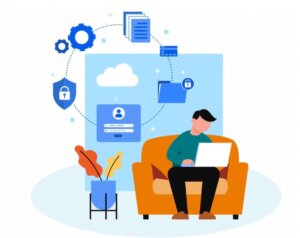
2. What are the benefits of NCE for Microsoft customers?
The New Commerce Experience brings several benefits to customers, focusing on flexibility, cost predictability and simplification of the purchasing and management of Microsoft cloud services.
Key benefits to NCE customers:
- Licensing is simplified with easier understanding and management of subscriptions.
- Flexibility to choose between monthly or annual subscriptions providing the option to scale up/down and meet changing business needs.
- Annual subscription commitments mean predictability and potential savings compared to a more flexible monthly plan. Committed prices are lower than the monthly prices.
- Buying and/or renewing subscriptions is made easier. There are strict rules for buying licenses, for example a seven-day limit to cancel in case you ordered the wrong product.
- As with all long-term Microsoft commitments, customers who choose annual committed subscriptions for NCE have access to new features as soon as they are released.
- Better support from Microsoft partners is promised. Microsoft Partners are required to adhere to certain standards and to offer value added services to their end-customers via the NCE.
- NCE offers a more consistent customer experience across all cloud services. It is a one-size fits all contractual vehicle, making it easy to move between Microsoft Partners. Microsoft Partners offer the standard contractual clauses for NCE (often tied to their own Terms and Conditions).
By focusing on these areas, the NCE is intended to provide a more customer-friendly approach to purchasing and managing Microsoft’s cloud services, aligning with modern business practices and customer expectations.

3. What is the difference between CSP and NCE?
NCE is a specific update within the Cloud Solution Provider (CSP) program that introduces changes to the pricing, licensing, and billing of Microsoft’s cloud services.
Overall, the NCE is a more flexible and predictable option for customers who are looking for a longer term commitment to Microsoft cloud services.
The CSP program is still a good option for customers who need more flexibility and who are not sure how much Microsoft cloud they will need in the future.
From legacy CSP to NCE
New Commerce Experience (NCE) is an update to the Cloud Solution Provider (CSP) program to purchase Microsoft’s cloud services, but the legacy CSP and NCE each have different functions and represent different stages in the evolution of Microsoft’s licensing and service delivery models.
The old legacy CSP is no longer available to new customers, however many old customers purchasing through partners in CSP are still able to leverage these prices. The monthly prices set in legacy CSP are in line with the annual committed offers in the NCE. If you were to migrate from legacy CSP to NCE, Microsoft wants you to move to annual commitments rather than monthly. If you require monthly payments your costs will go up.
CSP & NCE timeline
Microsoft Cloud Solution Provider (CSP) program was introduced in 2010 as a way for partners to sell Microsoft cloud services to their customers. The CSP program has been successful, and it has grown to be an important part of Microsoft’s cloud business. However, in recent years, Microsoft has been looking for ways to simplify its licensing structure and make it easier for customers to purchase and manage Microsoft cloud services.
In 2019, Microsoft announced the New Commerce Experience (NCE), which is a new way for customers to purchase Microsoft cloud services. The NCE is designed to be simpler and more flexible than the CSP program, and it offers a number of benefits to both customers and partners. Besides being simpler, the NCE also makes it easier for Microsoft partners to create their own solutions on the platform thus being able to provide better service to their end customers.
Key differences CSP & NCE
Essentially the CSP is the broader program through which Microsoft engages with partners to deliver its cloud services, while the NCE is a newer model within that program that updates how licensing, billing, and service commitments are structured. The NCE represents an evolution in the CSP program, aimed at simplifying and modernizing the purchasing and subscription management experience for both partners and customers.
The table below highlights the key differences between NCE & CSP:
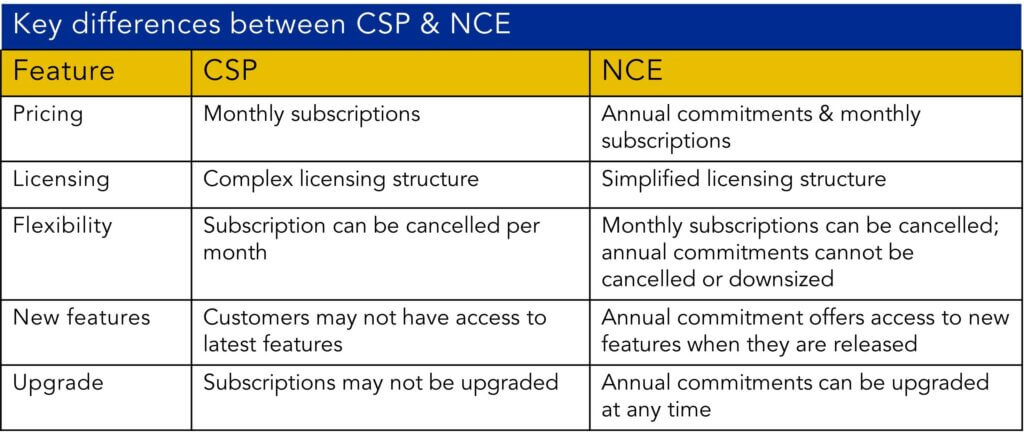
4. What is the impact of NCE on license management?
The NCE changes the way customers and Microsoft partners can procure and manage Microsoft cloud licenses. It is a new pricing model in the world of Microsoft licensing. It is designed to simplify the licensing process and enhance customer understanding and insight into their cloud licenses.
The NCE introduces several new licensing features, incl.:
- A number of new licensing terms such as monthly & annual committed subscriptions.
- Simplified pricing making it easier to compare.
- Better insight into cloud license usage
- Customers need proactive license management to the implications of subscription models on costs and flexibility.
5. What are the commitment options in NCE?
Microsoft offers two main types of commitments for the NCE. The introduction of these commitment options is a strategic move by Microsoft to allow different types of businesses to procure based on their varying needs.
Some organizations may prefer the stability and cost savings of an annual commitment, while others may prioritize the flexibility of a monthly plan to respond to dynamic market conditions or seasonal fluctuations in their operations.
NCE offers annual (committed) subscriptions as default and an optional monthly (non-committed) subscription.
Committed annual subscription
- Committed subscriptions cannot be cancelled or downsized, but they can be upgraded at any time.
- Committed subscriptions sold at a lower price than monthly subscriptions.
- Committed subscriptions can be paid on a monthly or annual basis.
Non-committed monthly subscription
- Non-committed monthly subscriptions offer flexibility to scale up/down or cancel, but they will be sold at a premium over the annual subscription price.
For Dynamics 365 the NCE also offers a 36-month commitment. Microsoft allows price locks for D365 for a 36-month period as D365 is often a crucial product for organizations and as such organizations want as much stability as possible, particularly when it comes to pricing. When NCE evolves further, Microsoft might allow this for other product groups as well.
Reach out to us
As with entering into any licensing agreement, it is important that you consider your specific usage and needs, your roadmap and budget when deciding on a licensing model. As each licensing model comes with different implications for costs and license management.
LicenseQ has the insight and experience to help you make this decision, reach out to us with any questions.
6. How does the NCE affect pricing?
NCE offers more flexibility and control over pricing compared to the previous CSP model. Here are the key points:
- Longer-term commitments: Lock in prices for a set period (e.g., 1 year, 3 years) for predictable costs.
- Mix and match: Choose monthly or committed offers for different products based on your needs.
- Partner-driven pricing: Compare prices from multiple partners for potential savings.
- Regional variations: Consider different partner prices across regions.
- Price beyond the number: Evaluate additional services and support offered by partners.
Decision-making process in the NCE
- Analyze your organization’s needs (services, user types, functionalities).
- Determine timing requirements (monthly flexibility vs. long-term commitment).
- Assess desired service and support levels.
- Compare prices from multiple partners across different regions.
- Regularly review your decisions and consider switching partners for cost savings.
Overall, NCE empowers you to optimize your pricing strategy and manage your cloud spend effectively.
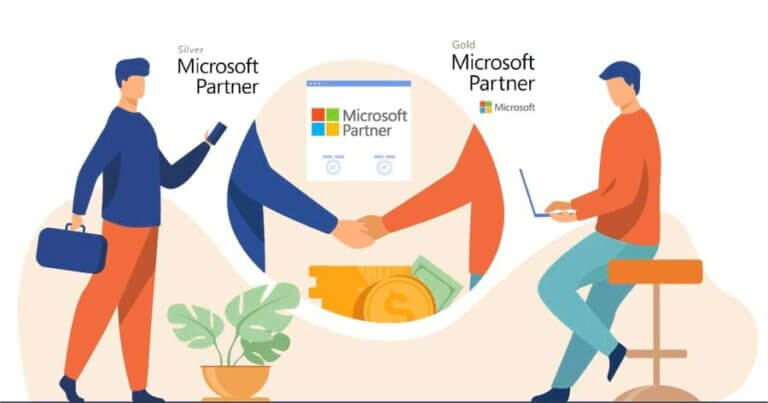
7. What is the role of Microsoft partners in the NCE?
Microsoft partners play a crucial role in the NCE as they facilitate the sale, management and support of Microsoft’s cloud offerings. By working with partners Microsoft hopes to scale more easily, enable faster and simpler transactions in the NCE and streamline licensing.
NCE evolves the way Microsoft Partners can do business, one of the biggest impacts being the requirement for partners to switch to a term-based billing model.
How Microsoft Partners work in NCE
Under NCE, partners order licenses for their end-customers on a request basis, similar to other contractual vehicles. Microsoft invoices the partner for these licenses upfront and the partner needs to cross charge these costs to their end-customers. Most partners add a margin for their services on top of the Microsoft list price and Microsoft allows them to do this. (as the CSP pricelist is only published to registered CSP partners).
Despite having to pay upfront costs and reclaiming these from their end-customers, the NCE is an attractive model for partners because of the option to add margins. The Microsoft Partner network has already expanded rapidly over the last years.
Main benefits to Microsoft Partners are:
- More predictable revenue – partners will know how much they have to pay for licenses each month
- Access to a wider range of Microsoft cloud products and services
- Build resilient and dynamic business practices by being able to meet varying customers’ needs with different subscription commitments
- Earn higher one-time margins by selling annual subscriptions (rather than monthly)
Additional benefits for Microsoft partners incl:
- Partners can offer M365 to customers at a lower price than for instance purchasing through the Microsoft website (or even some levels in the EA).
- Partners gain greater control over service management, including the ability to control subscription renewals, upgrade partial seats when moving to new SKUs, and schedule changes to subscriptions that take effect at the end of terms.
- Simplified billing by:
- Consolidating billing and invoicing using the partner’s currency
- Making billing dates consistent by basing them on months instead of mid-month dates that can vary across partner tenants
- Providing monthly, annual, or up-front billing for many subscriptions.
- Ability to programmatically retrieve pricing information for services through APIs, enhancing their ability to manage costs and make informed decisions. Through the API partners are able to create their own billing engines and customer portals to service their end-customers.
- More flexible way to purchase add-on services as these are no longer tied to base-offer transactions. This allows partners to tailor services to specific customer needs without unnecessary bundle restrictions.
- Access to new monthly term options, providing greater flexibility in tailoring their business models and adapting to customer requirements.
More information
This article provides a complete guide to Microsoft’s New Commerce Experience. If you are thinking about moving to the New Commerce Experience, you need to understand what this licensing model entails.
Our experts at LicenseQ know Microsoft licensing inside-out and can provide support in figuring out the best option for your organization.
For more information, visit our website or contact our licensing experts at info@licenseq.com.

